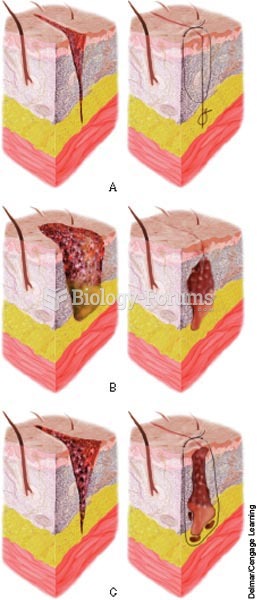Answer to Question 1
ANS: A
Health assessment data is organized in frameworks that provide a comprehensive view of a patient's health. Gordon's Functional Health Pattern focuses on patient's strengths and relationships of the data collected. The focus of nutrition and metabolism is tissue integrity. Data collected during a wound assessment would be classified in this health pattern. Activities of daily living and musculoskeletal information are the focus of activity and exercise. Sleep and rest includes sleep patterns, relaxation activities, and levels of fatigue. Bowel and urinary concerns are the focus of elimination.
Answer to Question 2
ANS: B
Marjory Gordon (2010) developed functional health patterns to help nurses focus on patient strengths and related but sometimes overlooked data relationships. For instance, one of the functional health patterns is activity and exercise. In this health pattern, the patient data related to cardiac, respiratory, and musculoskeletal function are recorded because the ability of a patient to initiate and continue activity depends on the condition of the heart, lungs, and muscles and bones. This method of organizing patient data is a more holistic approach than the others.
Organizing assessment data in a head-to-toe (cephalic-caudal) pattern ensures that all areas of concern are addressed. The nurse documents information regarding the patient's general health status first, including data related to psychosocial concerns, emotional status, cultural and ethnic influences, and living conditions. Vital sign assessment data are then recorded, followed by objective and subjective patient information. Physical assessment data are documented, starting with the head and ending with findings related to the lower extremities. The body systems model organizes data on the basis of each system of the body: integumentary, respiratory, cardiovascular, nervous, reproductive, musculoskeletal, gastrointestinal, genitourinary, and immune systems. It follows a sequence similar to the medical model for physical examination. The body systems model for data organization tends to focus on the physical aspects of a patient's condition rather than a more holistic view.






